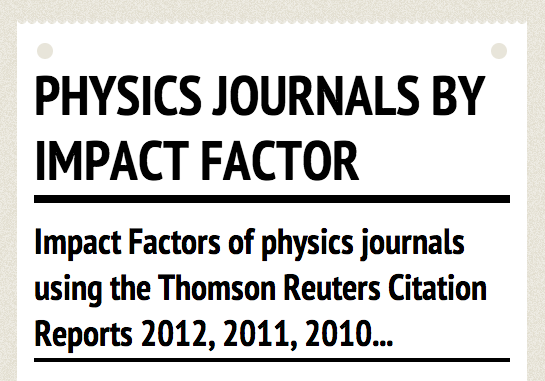by @abbybeall
Each year, Thomson Reuters publish a Citation Report, accessible through Web of Knowledge. It’s a list of journals and their calculated Impact Factors, among other statistics, over the previous two years. Impact Factor is historically a marker by which academics base their decisions to publish work in particular journals, but does this system work?
Impact Factor is calculated by taking the number of citations in a year, of articles written in the previous year, and dividing by the total number of articles written in the previous year. For a further explanation, click here.
One of the flaws in this system is that new journals, less than two years old, will not yet have an Impact Factor since it’s based on the previous two years’ statistics. This could prevent authors submitting to the new journal, doubting their quality.
If you’re a physics academic, we’d love to know what you think. Does the Thomson Reuters list by Impact Factor reflect the top quality physics journals? Is there a better measure of journal quality?
Click on the image for the infographic.


